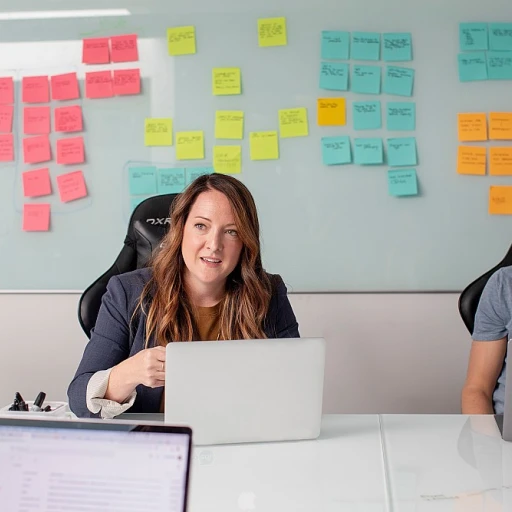
The Shift Towards Continuous Learning
Embracing Lifelong Education in Modern Workplaces
The corporate sector is witnessing a transformation as businesses increasingly adopt a culture of continuous learning. This shift is driven by the rapidly changing landscape of industries, which requires employees to adapt and develop new skills continuously. Organizations now emphasize lifelong learning strategies to keep their workforce agile and prepared for future challenges.
To stay competitive and relevant, companies recognize that their employees must engage in ongoing education rather than relying solely on formal education pathways. This approach is reshaping how corporations perceive learning: as an ongoing, integral part of an employee's career. It also encourages a mindset shift, where learning is an open-ended pursuit rather than a destination achieved at the end of a formal schooling journey.
The roles of directors and vice presidents of corporate education have become crucial in this environment, as they develop and implement programs that align with the organization's strategic goals. By fostering an open learning culture, these leaders strive to prepare their teams for new job roles and responsibilities, emphasizing the necessity of being proactive in personal and professional development.
However, continuous learning extends beyond technical skills. The importance of soft skills, such as communication, teamwork, and problem-solving, is increasingly recognized in the workplace. These competencies are vital as businesses navigate the complexities of global markets and diverse workforces. Thus, corporate education programs aim to balance hard skills training with the development of these essential attributes.
With the growing use of online platforms and mobile apps, access to learning content has never been easier. As a result, organizations can deliver training programs efficiently and reach employees at various levels of their careers, including high school graduates entering the workforce or those seeking to transition into new roles. Exploring continuous education not only enhances individual career prospects but also strengthens the overall capability of the business.
To further delve into the significance of embracing failure as a growth opportunity within corporate learning strategies, readers can explore more on embracing failure for growth in the future of work.
Integrating Technology in Corporate Education
Embracing Technology for Enhanced Learning Experiences
The integration of technology in the realm of corporate education has become an indispensable factor in the modern workplace. Companies are increasingly investing in innovative tools and platforms to bridge the gap between traditional education methods and the evolving demands of the business world. This technological shift offers corporations the ability to create diverse and dynamic learning opportunities for their employees. The implementation of online programs and mobile app-based education platforms has allowed corporations to reach their learners more effectively. These tools offer flexible options for learning, enabling employees to engage in training at their own pace and convenience. As a result, education can now be accessed anytime and anywhere, catering to the imminent need for continuous skill development within various careers. One such example of technology integration is the use of artificial intelligence (AI) and machine learning to create adaptive learning environments. These systems personalize learning paths based on a user's performance, providing individuals with tailored content that meets their unique learning requirements. In addition to AI, corporations are deploying Virtual Reality (VR) and Augmented Reality (AR) to simulate real-world scenarios. This enhances the learning experience by allowing employees to gain practical insights and hands-on experience, making theoretical knowledge more tangible. While the focus on digital transformation in corporate education is evident, it is essential to consider the accessibility and inclusivity of these technologies. Ensuring that employees at various levels of education and those with special education needs can fully participate in new learning initiatives is crucial. The deployment of technology should aim towards creating equitable learning experiences that prepare the workforce for future job opportunities. When exploring corporate education programs, it is important to measure the impact of these technologies on both employees and businesses. Using metrics and feedback obtained through digital platforms helps in refining and optimizing the programs for better outcomes. The involvement of the education department, human resources, and directors is crucial in monitoring and enhancing these programs to meet the corporation's goals. Overall, embracing these technologies not only transforms the corporate learning landscape but also fosters a culture of lifelong learning. By staying updated on the latest advancements and aligning them with the corporation's objectives, businesses can create an engaging learning environment that evolves alongside industry trends. For further insights on how coherence learning can be unlocked in the future of work, you can explore this resource.Personalized Learning Paths for Employees
Creating Tailored Learning Journeys
In the era of rapid technological advancements and globalization, employees across various sectors, including business and education, face the necessity of continuous learning to remain relevant and competitive. The concept of personalized learning paths has emerged as a powerful approach to ensuring that workers receive the appropriate training and education at every stage of their careers. Corporations are now increasingly integrating personalized learning strategies in their training programs. These strategies allow employees to explore content specifically tailored to their current skill level and career aspirations. Education corporations are leveraging data analytics to design these customized pathways, providing a more targeted experience that aligns educational opportunities with employees' unique needs and the corporation's goals. The role of technology in facilitating these personalized learning experiences cannot be understated. With the aid of sophisticated mobile apps and online platforms, learners can access educational content anytime, anywhere, spanning from high school level to post-secondary and higher education. This flexibility enables employees to manage their learning within their career schedules, ensuring that learning becomes an integral, rather than disruptive, part of their daily work life. Program directors and vice presidents within the education department are pivotal in overseeing these transitions, ensuring that the curriculum not only adapitates to the ever-evolving job market but also promotes the development of essential soft skills vital for future roles. Organizations like McGraw Hill and Perdoceo Education are setting precedent with their focus on customization, highlighting the importance of career services that extend beyond traditional school settings. Employees can now benefit from international education programs tailored to support diverse and international career paths. Such initiatives not only prepare employees for higher positions within their corporation, but they also ensure that they remain open and adaptable to a constantly shifting career landscape. For more in-depth understanding of retooling for future work, explore the insights provided here: retooling for the future of work. As these personalized programs evolve, they continue to reflect the dynamic state of the workplace and the pivotal role of corporate education in shaping the workforces of tomorrow.The Role of Soft Skills in the Future Workplace
The Growing Importance of Non-Technical Abilities
In the future workplace, the demand for soft skills is predicted to rise significantly. While technical skills remain crucial, soft skills such as communication, teamwork, adaptability, and problem-solving are becoming equally vital in the corporate education landscape. As corporations strive to keep pace with the digital age, fostering these competencies can enhance collaboration and innovation among employees.
Soft skills are not easily taught through traditional education systems like those found in schools and universities. Instead, they necessitate interactive learning experiences often overlooked by mainstream educational programs. Business leaders and directors must recognize the value these skills bring to personal and professional growth, ensuring they are integrated into ongoing employee development.
Corporate education programs are increasingly prioritizing the cultivation of these abilities. Training sessions, workshops, and even dedicated mobile apps can play a role in improving employees' soft skills, preparing them for higher roles in their careers or facilitating lateral moves to new jobs within the organization. Human resources departments are tasked with designing and implementing these initiatives to build a well-rounded workforce.
Integrating soft skills training into career education programs enables employees to adapt to evolving work environments and technological advancements. As explored in conversations across the higher education and corporate sectors, this approach prevents skills obsolescence and boosts employees' long-term career prospects.
Organizations from various industries are closely following trends in post-secondary and secondary education to identify effective methods for teaching these important non-technical abilities. The emphasis on soft skills development aligns with the push toward a collaborative learning environment, where students, employees, and leaders alike can learn from one another and grow together.
Collaborative Learning Environments
Fostering a Collaborative Culture in Corporate Learning
Learning within corporations is no longer confined to a solitary pursuit. As workplaces increasingly favor collaborative environments, businesses are beginning to realize the significance of integrating social learning strategies into their training programs. This shift acknowledges that real-world knowledge and skills are often developed through interactions with others, rather than just individual effort. Collaboration allows employees to engage in peer-to-peer learning, where team members can share insights and experiences that might otherwise be unavailable through traditional educational methods. In this context, education isn't limited to formal programs but extends to informal settings where knowledge exchange happens organically. Moreover, with the advancement of technology, online platforms and mobile apps play a pivotal role in enabling collaborative learning. These digital tools empower students, employees, and even high school graduates entering the job market, to engage in real-time discussions, participate in virtual workshops, and work together on shared projects regardless of geographical constraints. Incorporating social elements into corporate education isn't just about leveraging technology. It's about cultivating a culture that values openness and continuous learning, where employees feel encouraged to explore diverse perspectives. This type of environment is supported by education groups, directors, and vice presidents who prioritize collaboration as a vital component of employee development. Beyond technological integration, human resources can drive collaborative efforts by promoting team-building activities, creating forums for open dialogue, and encouraging cross-departmental initiatives. An emphasis on collaboration not only enhances corporate learning efforts but also prepares personnel for the dynamic demands of the global workplace, reinforcing the importance of soft skills previously discussed.Measuring the Impact of Corporate Education
Assessing the Value of Learning Initiatives
Measuring the impact of corporate education is crucial to ensure that organizations are investing resources effectively. With the continuous evolution in the education department and the growing emphasis on continuous learning, corporations need to assess and optimize their training programs. To determine the effectiveness of learning initiatives, companies should employ a mix of quantitative and qualitative approaches.- Quantitative Measures: Metrics such as completion rates, test scores, and certification achievements provide tangible evidence of learning progress. Higher education institutions often rely on such data to evaluate the effectiveness of courses. Similarly, corporations can track career advancements or job performance to assess the success of their training initiatives.
- Qualitative Insights: Feedback from participants can offer valuable insights. Human resources teams and career services often explore direct feedback from learners to gauge program effectiveness and identify areas for improvement.












